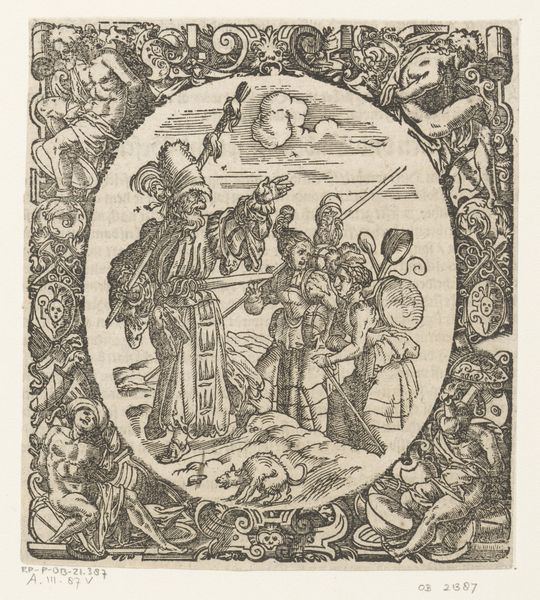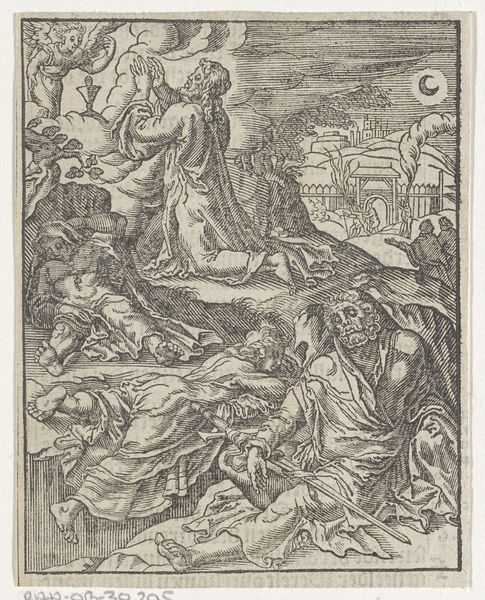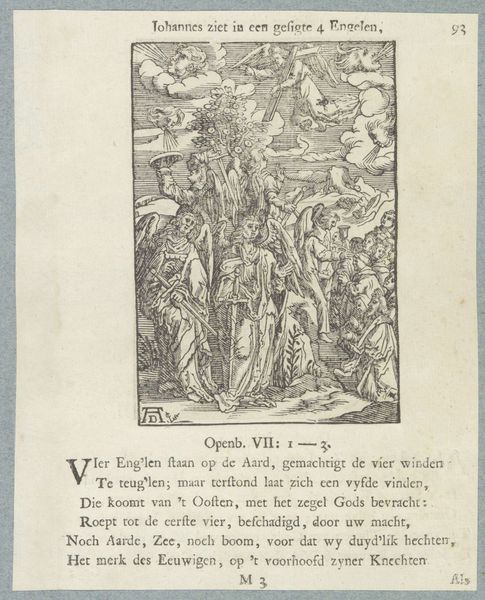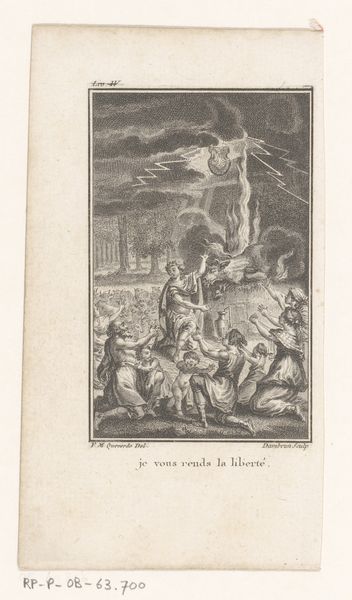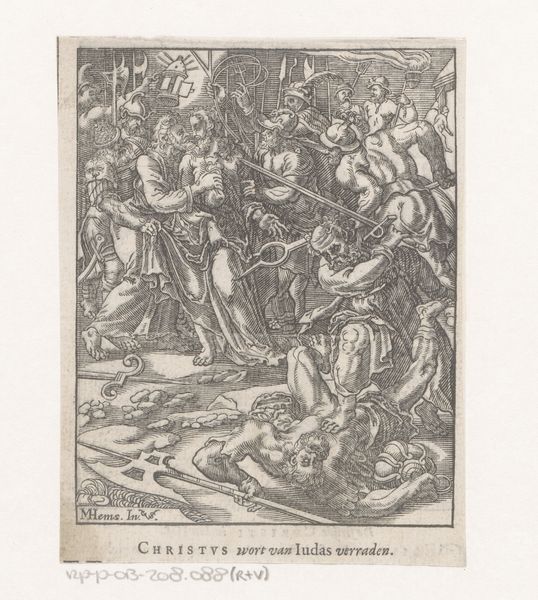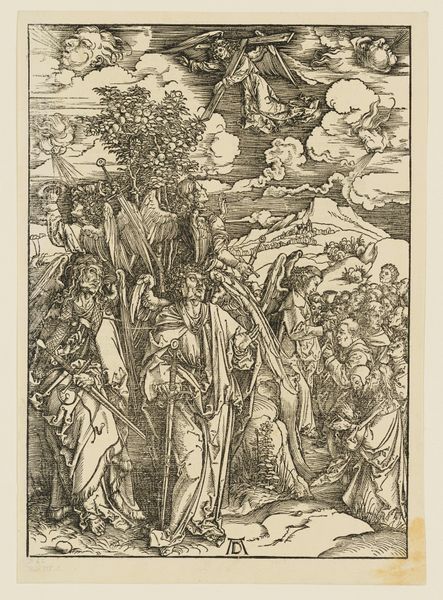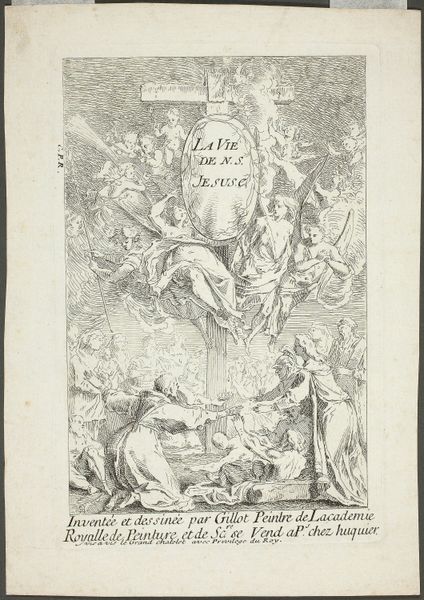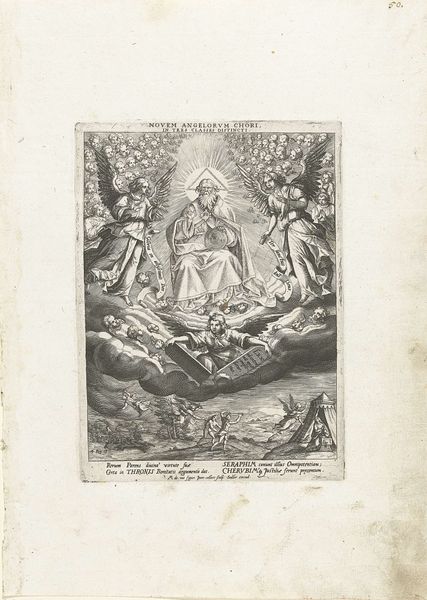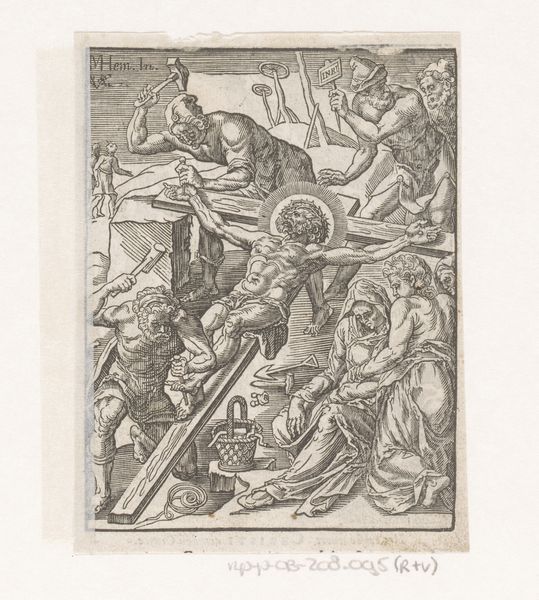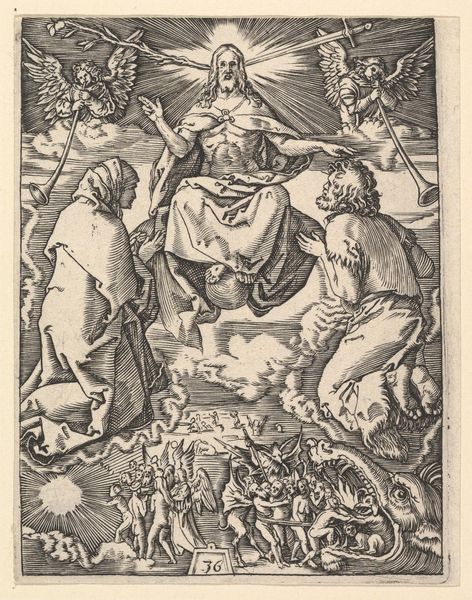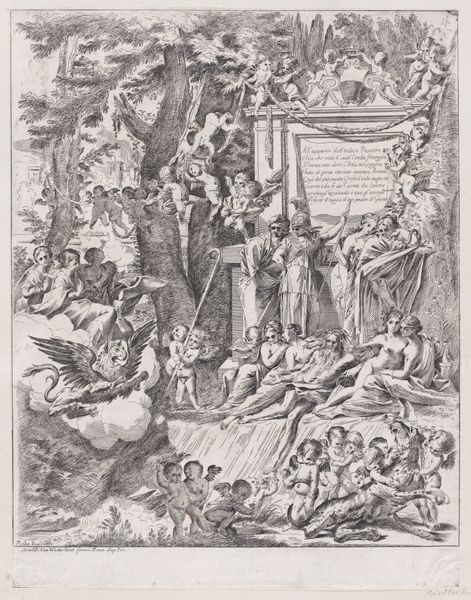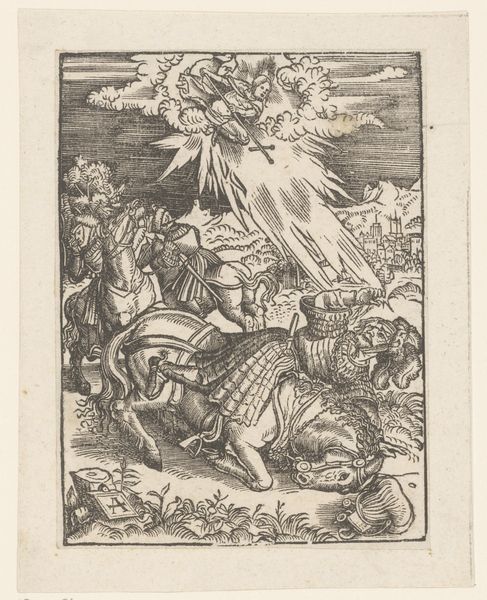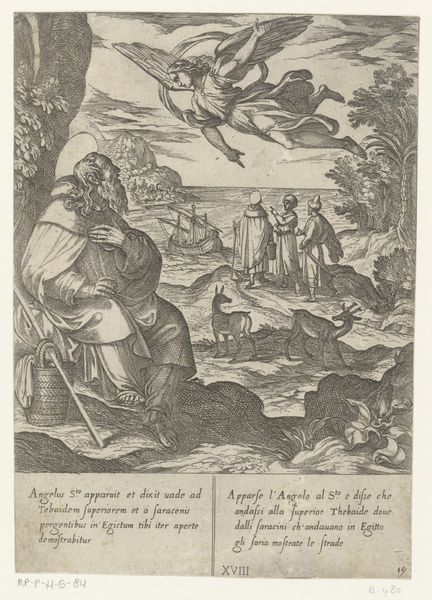
print, engraving
#
baroque
# print
#
figuration
#
history-painting
#
engraving
Dimensions: height 124 mm, width 95 mm
Copyright: Rijks Museum: Open Domain
Curator: We're looking at "Christus in de hof van Getsemane," or "Christ in the Garden of Gethsemane," a print made around 1648 by Christoffel van Sichem II. It's currently held in the Rijksmuseum collection. Editor: My initial impression is one of stark contrast, a heavy feeling despite the delicate lines. The artist uses all these sharp, almost frantic, engraved lines to depict a scene of profound stillness and spiritual agony. I am curious about the physical labor of making all those engravings! Curator: It’s a powerful visualization of a pivotal moment. Note the traditional symbolism. Angels descend with a chalice representing Christ's impending sacrifice. Below, his disciples slumber, unaware. Christ's hands are clasped together, a timeless posture of prayer. The halo above symbolizes divine favor. Editor: And that contrast emphasizes a real human story! It's interesting how this printmaking technique, reliant on such repetitive actions, paradoxically emphasizes uniqueness—this moment of anxiety is singular for Christ. One wonders about the market that supported an engraver depicting such a scene, the network of production... Curator: This work also fits within a longer cultural narrative of portraying Christ's suffering and its relation to the promise of redemption. Think about the Baroque fascination with drama, intense emotion, and the contrast between light and shadow. These motifs are all visually codified, easily legible for a seventeenth-century audience steeped in scripture. Editor: Yet even now, removed from the 17th century, I feel the sense of solitude emanating from the figure of Christ, set against this stark white night sky and a town that's not helping him! To bring it back to process, consider that Van Sichem carefully chose the materials – the metal, the ink – knowing these marks would stand for centuries. How does material agency extend this idea of a solitary human figure throughout time? Curator: That’s a crucial question, isn’t it? How visual encoding can affect cultural memory. Thank you. Editor: A somber thought to end on! The physicality of print as an allegory for that isolation, captured for us centuries later.
Comments
No comments
Be the first to comment and join the conversation on the ultimate creative platform.
